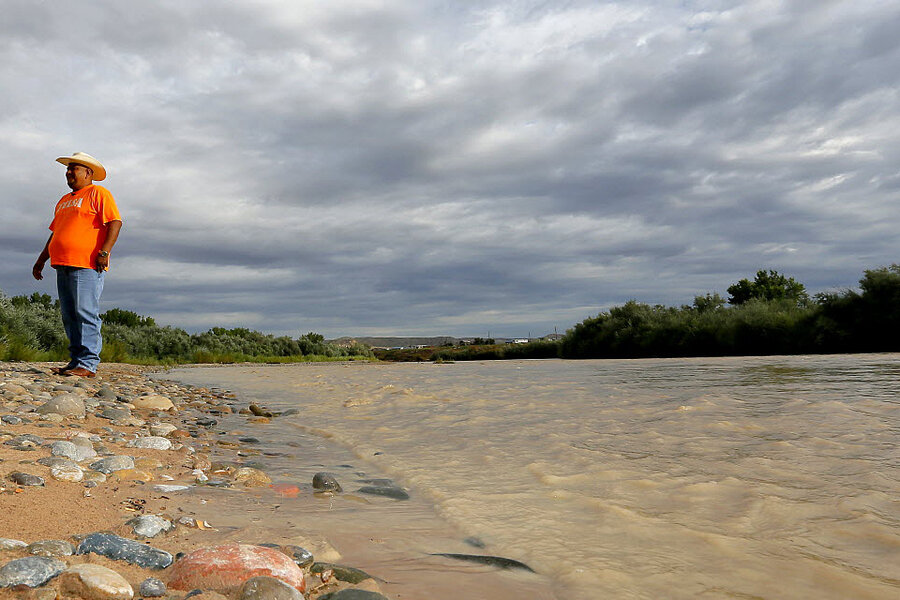EPA head promises to 'protect public health' after Colorado spill
Loading...
The head of the US Environmental Protection Agency took full responsibility for the accidental spillage of 3 million gallons of mine waste containing lead and arsenic into a Colorado river.
Administrator Gina McCarthy said in Washington, D.C., on Tuesday that it “pains me to no end” to see the pollution caused by an accident involving an inspection of an abandoned mine by federal and contract workers. The EPA is working to assess the environmental impact of the spill, she said, emphasizing the group’s determination to “get this right and protect public health.”
Cleanup is expected to be costly and difficult. The Christian Science Monitor’s Pete Spotts writes,
The most effective way to deal with the problem at the moment is to treat the water at the mine, then release it to flow through the watershed. But that can cost between $500,000 to $1 million per mine per year, essentially forever.
Politics and public relations also can impede clean-up.
Four years ago, the EPA noted that a group of mines along the upper reaches of Cement Creek were collectively leaking enough contaminated water to qualify as a Superfund site. This would have opened federal coffers to help pay for remediation. But the notion ran into stiff local opposition, in no small part because many people worried that the Superfund label would send tourists elsewhere.”
Colorado’s governor John Hickenlooper visited the river Tuesday in the city of Durango, after declaring the area a disaster Monday and allocating half a million dollars to relieve businesses and towns affected by the spill.
Officials have placed cages in the Animas River to catch fish and study how the spill has affected the river’s wildlife.
Tuesday also marked the first day people affected by the spill, which flowed at least 100 miles downstream into New Mexico, could file claims with the EPA. Communities and farmers along the Animas and San Juan rivers had to stop using the river water, and were given no estimation for when they would be able to resume.
This report contains material from the Associated Press.








